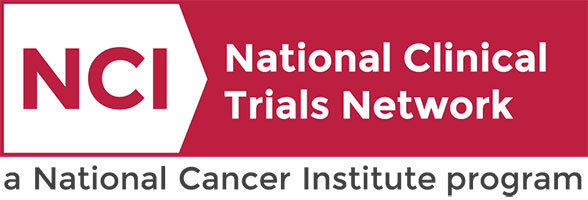A Study Testing the Combination of Dasatinib or Imatinib to Chemotherapy Treatment With Blinatumomab for Children, Adolescents, and Young Adults With Philadelphia Chromosome Positive (Ph+) or ABL-Class Philadelphia Chromosome-Like (Ph-Like) B-cell Acute Lymphoblastic Leukemia (B-ALL)
Leukemia
Leukemia
This pilot trial assesses the effect of the combination of blinatumomab with dasatinib or imatinib and standard chemotherapy for treating patients with Philadelphia chromosome positive (Ph+) or ABL-class Philadelphia chromosome-like (Ph-like) B-Cell acute lymphoblastic leukemia (B-ALL). Blinatumomab is a bispecific antibody that binds to two different proteins-one on the surface of cancer cells and one on the surface of cells in the immune system. An antibody is a protein made by the immune system to help fight infections and other harmful processes/cells/molecules. Blinatumomab may bind to the cancer cell and a T cell (which plays a key role in the immune system's fighting response) at the same time. Blinatumomab may strengthen the immune system's ability to fight cancer cells by activating the body's own immune cells to destroy the tumor. Dasatinib and imatinib are in a class of medications called tyrosine kinase inhibitors. They work by blocking the action of an abnormal protein that signals cancer cells to multiply, which may help keep cancer cells from growing. Giving blinatumomab and dasatinib or imatinib in combination with standard chemotherapy may work better in treating patients with Ph+ or Ph-like ABL-class B-ALL than dasatinib or imatinib with chemotherapy.
Leukemia
III
Smith, Brianna
NCT06124157
COGAALL2131
Comparing Sentinel Lymph Node (SLN) Biopsy With Standard Neck Dissection for Patients With Early-Stage Oral Cavity Cancer
Head/Neck
Head/Neck
This phase II/III trial studies how well sentinel lymph node biopsy works and compares sentinel lymph node biopsy surgery to standard neck dissection as part of the treatment for early-stage oral cavity cancer. Sentinel lymph node biopsy surgery is a procedure that removes a smaller number of lymph nodes from your neck because it uses an imaging agent to see which lymph nodes are most likely to have cancer. Standard neck dissection, such as elective neck dissection, removes many of the lymph nodes in your neck. Using sentinel lymph node biopsy surgery may work better in treating patients with early-stage oral cavity cancer compared to standard elective neck dissection.
Head/Neck
II/III
Topf, Michael
NCT04333537
NRGHN006
A Study of Treatment for Medulloblastoma Using Sodium Thiosulfate to Reduce Hearing Loss
This phase III trial tests two hypotheses in patients with low-risk and average-risk medulloblastoma. Medulloblastoma is a type of cancer that occurs in the back of the brain. The term, risk, refers to the chance of the cancer coming back after treatment. Subjects with low-risk medulloblastoma typically have a lower chance of the cancer coming back than subjects with average-risk medulloblastoma. Although treatment for newly diagnosed average-risk and low-risk medulloblastoma is generally effective at treating the cancer, there are still concerns about the side effects of such treatment. Side effects or unintended health conditions that arise due to treatment include learning difficulties, hearing loss or other issues in performing daily activities. Standard therapy for newly diagnosed average-risk or low-risk medulloblastoma includes surgery, radiation therapy, and chemotherapy (including cisplatin). Cisplatin may cause hearing loss as a side effect. In the average-risk medulloblastoma patients, this trial tests whether the addition of sodium thiosulfate (STS) to standard of care chemotherapy and radiation therapy reduces hearing loss. Previous studies with STS have shown that it may help reduce or prevent hearing loss caused by cisplatin. In the low-risk medulloblastoma patients, the study tests whether a less intense therapy (reduced radiation) can provide the same benefits as the more intense therapy. The less intense therapy may cause fewer side effects. Radiation therapy uses high energy x-rays to kill tumor cells and shrink tumors. Cisplatin is in a class of medications known as platinum-containing compounds. It works by killing, stopping or slowing the growth of cancer cells. The overall goals of this study are to see if giving STS along with standard treatment (radiation therapy and chemotherapy) will reduce hearing loss in medulloblastoma patients and to compare the overall outcome of patients with medulloblastoma treated with STS to patients treated without STS on a previous study in order to make sure that survival and recurrence of tumor is not worsened.
Not Available
III
Not Available
NCT05382338
VICC-NTPED23124
Inotuzumab Ozogamicin in Treating Younger Patients With B-Lymphoblastic Lymphoma or Relapsed or Refractory CD22 Positive B Acute Lymphoblastic Leukemia
This phase II trial studies how well inotuzumab ozogamicin works in treating younger patients with B-lymphoblastic lymphoma or CD22 positive B acute lymphoblastic leukemia that has come back (relapsed) or does not respond to treatment (refractory). Inotuzumab ozogamicin is a monoclonal antibody, called inotuzumab, linked to a toxic agent called ozogamicin. Inotuzumab attaches to CD22 positive cancer cells in a targeted way and delivers ozogamicin to kill them.
Not Available
II
Not Available
NCT02981628
COGAALL1621
FORTIFI-HN01: A Study of Ficerafusp Alfa (BCA101) or Placebo in Combination With Pembrolizumab in First-Line PD-L1-pos, R or M HNSCC
Head/Neck
Head/Neck
Ficerafusp alfa is directed against two targets, Epidermal Growth Factor Receptor (EGFR) and Transforming Growth Factor beta (TGF-).
This study intends to evaluate the safety and efficacy of ficerafusp alfa in combination with pembrolizumab versus placebo with pembrolizumab in 1L PD-L1-positive, recurrent or metastatic Head and Neck Squamous Cell Carcinoma (HNSCC).
This study intends to evaluate the safety and efficacy of ficerafusp alfa in combination with pembrolizumab versus placebo with pembrolizumab in 1L PD-L1-positive, recurrent or metastatic Head and Neck Squamous Cell Carcinoma (HNSCC).
Head/Neck
II/III
Choe, Jennifer
NCT06788990
VICC-DTHAN23428
Expanded Access Study for the Treatment of Patients With Commercially Out-of-Specification Axicabtagene Ciloleucel
Lymphoma
Lymphoma
The goal of this study is to provide access to axicabtagene ciloleucel for patients diagnosed with a disease approved for treatment with axicabtagene ciloleucel, that is otherwise out of specification for commercial release.
Lymphoma
N/A
Jallouk, Andrew
NCT05776160
VICC-XDCTT23452
Lenalidomide, and Dexamethasone With or Without Daratumumab in Treating Patients With High-Risk Smoldering Myeloma
Multiple Myeloma
Multiple Myeloma
This phase III trial studies how well lenalidomide and dexamethasone works with or without daratumumab in treating patients with high-risk smoldering myeloma. Drugs used in chemotherapy, such as lenalidomide and dexamethasone, work in different ways to stop the growth of tumor cells, either by killing the cells, by stopping them from dividing, or by stopping them from spreading. Immunotherapy with monoclonal antibodies, such as daratumumab, may induce changes in the body's immune system and may interfere with the ability of tumor cells to grow and spread. Giving lenalidomide and dexamethasone with daratumumab may work better in treating patients with smoldering myeloma.
Multiple Myeloma
III
Baljevic, Muhamed
NCT03937635
ECOGPCLEAA173
Carmustine Wafer in Combination With Retifanlimab and Radiation With/Without Temozolomide in Subjects With Glioblastoma
Multiple Cancer Types
The purpose of the study is to evaluate the safety and survival of carmustine wafers and radiation and retifanlimab with or without temozolomide (TMZ) in newly-diagnosed adult subjects with glioblastoma multiform after carmustine wafer placement.
Neuro-Oncology,
Phase I
I
Thompson, Reid
NCT05083754
VICCNEUP22119
Expanded Access Study for the Treatment of Patients With Commercially Out-of-Specification Brexucabtagene Autoleucel
Multiple Cancer Types
The goal of this study is to provide access to brexucabtagene autoleucel for patients diagnosed with a disease approved for treatment with brexucabtagene autoleucel, that is otherwise out of specification for commercial release.
Leukemia,
Lymphoma
N/A
Jallouk, Andrew
NCT05776134
VICC-XDCTT23451
Testing the Effectiveness of Two Immunotherapy Drugs (Nivolumab and Ipilimumab) With One Anti-cancer Targeted Drug (Cabozantinib) for Rare Genitourinary Tumors
Multiple Cancer Types
This phase II trial studies how well cabozantinib works in combination with nivolumab and ipilimumab in treating patients with rare genitourinary (GU) tumors that has spread from where it first started (primary site) to other places in the body. Cabozantinib may stop the growth of tumor cells by blocking some of the enzymes needed for cell growth. Immunotherapy with monoclonal antibodies, such as nivolumab and ipilimumab, may help the body's immune system attack the cancer, and may interfere with the ability of tumor cells to grow and spread. Giving cabozantinib, nivolumab, and ipilimumab may work better in treating patients with genitourinary tumors that have no treatment options compared to giving cabozantinib, nivolumab, or ipilimumab alone.
Bladder,
Kidney (Renal Cell),
Rectal
II
Tan, Alan
NCT03866382
ALLIANCEUROA031702


